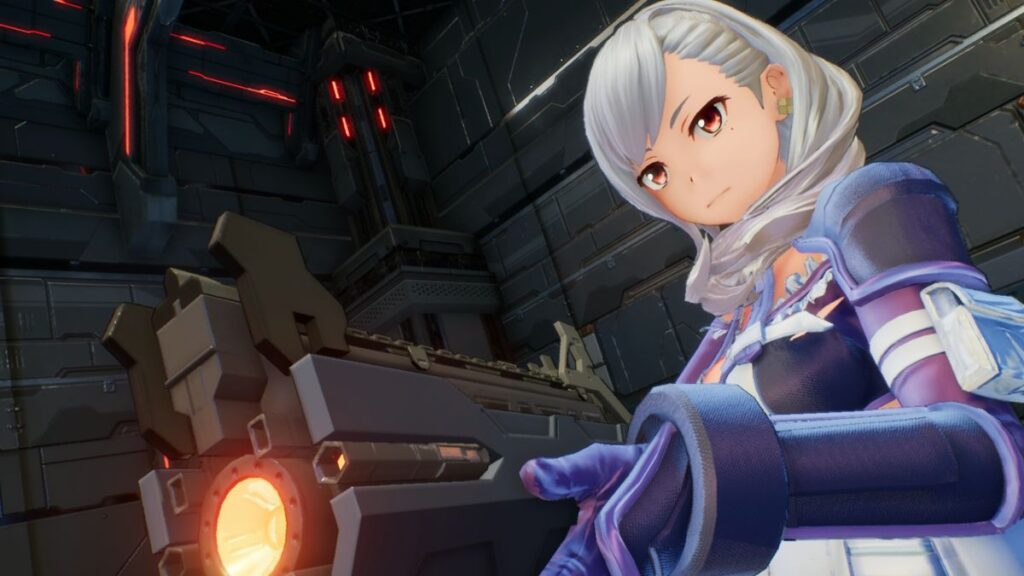Introduction
In the labyrinth of modern creativity, where the collision of art, technology, and culture births new paradigms every day, one enigmatic term has begun to ripple through underground forums and avant-garde studios alike: sankkucomplex. At first glance, sankkucomplex feels like an abstract incantation—a made-up word meant to provoke curiosity. But scratch beneath the surface, and you’ll discover a potent concept that encapsulates our era’s restless blend of complexity, contradiction, and creative urgency.
This deep dive—crafted in true SPARKLE fashion—peels back the layers of sankkucomplex: its origins, anatomy, real-world manifestations, and future trajectory. Prepare for a narrative that’s part investigative feature, part creative manifesto, and entirely soaked in punchy storytelling.
1. Naming the Beast: What Is Sankkucomplex?
At its core, sankkucomplex fuses two linguistic riffs. “Sankku,” an onomatopoeic nod to clashing elements (think of a sudden metallic clang echoing in a vast hall), meets “complex,” suggesting layers, intricacy, and interwoven systems. Together, they define a phenomenon where disparate influences collide so forcefully they generate something wholly new—and often disorienting.
-
Disruption Meets Synthesis
-
Sankkucomplex isn’t mere chaos. It’s controlled chaos—like a jazz improvisation that defies conventions yet reveals hidden harmonies.
-
It thrives on tension between tradition and innovation, comfort zones and the unknown.
-
-
A Mind-State, An Aesthetic
-
Some creators describe sankkucomplex as a mental “mode switch,” where analytical precision toggles with emotive abandon.
-
Visually, it manifests as glitch-art overlays on Renaissance portraits, neon graffiti scrawled across concrete Brutalist walls, or electronic noise music that samples Gregorian chants.
-
-
Cultural Crossroads
-
From Tokyo’s underground performance scene to Berlin’s techno temples, sankkucomplex echoes in spaces that celebrate friction—where East meets West, past meets future, and analogue meets digital.
-
2. Roots and Resonance: The Birth of Sankkucomplex
To trace sankkucomplex’s genealogy, we must venture into several key nodes of 21st-century culture:
2.1 The Cyber-Punk Revival
-
Neo-Tokyo Aesthetics: The resurgence of cyber-punk narratives—films, manga, VR experiences—rekindled fascination with neon, circuitry, and dystopian urban sprawl.
-
Glitch Art: Initially an accidental byproduct of corrupted digital files, glitch aesthetics became a deliberate artistic choice, celebrating the beauty in malfunction. Sankkucomplex absorbed this ethos, embracing the imperfect.
2.2 Post-Internet Art Movements
-
Data Overload: As social media feeds spiral into infinite scrolls, artists began interrogating information saturation.
-
Mash-Up Culture: Sampling, remixing, and recontextualizing content led to layered works where meaning emerges from juxtapositions—a core sankkucomplex trait.
2.3 Intersectional Philosophy
-
Complex Systems Theory: The scientific study of networks—be it ecological, social, or technological—offered metaphors for creative processes that aren’t linear but emergent.
-
Deleuzian Rhizomes: Philosophers like Gilles Deleuze posited knowledge as non-hierarchical, branching infinitely. Sankkucomplex embodies this sprawling, networked way of thinking.
3. Anatomy of a Sankkucomplex Creation
What happens when an artist “goes sankku”? Let’s dissect the key components:
3.1 Intentional Disruption
-
Rule-Breaking: The creator deliberately undermines genre conventions—maybe splicing classical sonatas into heavy metal riffs.
-
Unexpected Pairings: A painter might combine hyperrealist portraiture with expressive brushstrokes in clashing color palettes.
3.2 Layered Complexity
-
Visual Texture: Multiple mediums—digital, analogue, organic—coalesce in a single frame.
-
Narrative Depth: Stories unfold across non-linear timelines, demanding active engagement rather than passive consumption.
3.3 Reflexive Commentary
-
Meta-Awareness: Many sankkucomplex works reference their own making, breaking the fourth wall.
-
Cultural Critique: Beneath the aesthetic juggernaut often lies commentary on consumerism, identity politics, or tech-culture paradoxes.
4. Case Studies: Sankkucomplex in Action
4.1 Music: The Hyper-Glitch Symphony
In 2023, experimental composer Aiko “Kurai” Nakamura released Metallic Horizons, a 12-track album woven entirely from field recordings of urban demolition sites, glass shards, and classical piano.
-
Technique: Each recording was algorithmically fragmented, then reassembled with neural-style audio synthesis. The result: tracks that feel both mechanical and hauntingly human.
-
Reception: Critics hailed Metallic Horizons as “the soundtrack of a future rupturing at the seams,” praising its sankkucomplex blend of noise and melody.
4.2 Visual Art: Concrete Jungle Remix
Berlin artist Marcus Fuchs’s installation Ruined Utopia enveloped viewers in a decaying cityscape printed on translucent panels, overlaid with vibrant AR projections of digital flora.
-
Experience: Walking through the exhibit, visitors toggled between ruin and regeneration, analog decay and digital bloom—a visceral sankkucomplex journey.
-
Impact: Museums worldwide are now commissioning similar immersive works, recognizing sankkucomplex’s power to bridge reality and virtuality.
4.3 Fashion: Cyber-Goth Revival
In London’s 2024 Fashion Week, designer Zara Aziz unveiled a line marrying Victorian corsetry with LED-embedded fabrics.
-
Design Philosophy: Corsets laced with fiber optics, paired with sculptural boots housing micro-speakers emitting sub-bass pulses.
-
Cultural Uptake: Influencers flocked to Aziz’s “sankkucomplex runway,” reinterpreting Victorian-Era silhouettes through a dystopian-glam lens.
5. Why Sankkucomplex Matters Now
In a world hammered daily by seismic shifts—pandemics, climate crises, AI revolution—sankkucomplex resonates because it mirrors our collective psyche:
-
Adaptive Creativity
-
Sankkucomplex teaches us to synthesize chaos into meaning, a vital skill when paradigms shift overnight.
-
-
Engaged Audiences
-
Its layered nature demands active participation, countering passive scrolling and information numbing.
-
-
Cultural Hybridization
-
By blending global influences, sankkucomplex offers a model for cultural exchange—celebrating difference without erasing originality.
-
6. The Sankkucomplex Toolkit: Embracing the Method
6.1 Research and Remix
-
Archive Diving: Scour dusty film reels, out-of-print zines, and niche online forums for raw material.
-
Permission-Free Sampling: Use public domain or Creative Commons to splice and sample without legal tangles.
6.2 Prototype and Iterate
-
Rapid Prototyping: Draft multiple versions—digital mockups, rough sketches, sonic sketches.
-
Feedback Loops: Present fragments to trusted peers, then refine. Sankkucomplex thrives on iterative tension.
6.3 Tech-Fusion
-
AI Collaborators: Leverage generative models as co-creators—push them to glitch, hallucinate, and surprise you.
-
Analog Anchors: Balance code-driven processes with tactile mediums—paint, sculpture, found objects.
6.4 Narrative Warp
-
Non-Linear Storytelling: Experiment with fractured timelines—audio diaries, fragmented texts, interactive paths.
-
Meta Layers: Embed clues about your process within the work—Easter eggs for attentive explorers.
7. Controversies and Critiques
No rising movement is without its skeptics:
-
Over-Intellectualization
-
Critics claim sankkucomplex sometimes masquerades as depth, when it’s art-school obfuscation.
-
-
Accessibility Concerns
-
Its deliberate complexity can alienate casual audiences—does every piece need a manual to decode?
-
-
Ethical Sampling
-
As artists harvest global archives, questions arise: Are we amplifying marginalized voices or appropriating them?
-
Yet these debates reflect sankkucomplex’s potency: it sparks conversation, resists easy categorization, and forces us to confront art’s evolving role.
8. The Global Ripple: Sankkucomplex Communities
Across continents, sankkucomplex hubs have sprung up:
-
Tokyo’s “Clang Chamber”: Underground clubs where DJs remix demolition footage in VR, inviting dancers to wear sonar-powered boots that trigger audio samples with each step.
-
São Paulo Zine Fairs: DIY publishers print micro-chapters of sankkucomplex poems on found paper scraps, trading them like urban talismans.
-
Nairobi Digital Studios: Hackers and artists collaborate on AR murals that flicker between Swahili proverbs and algorithmic glitch, exploring the tension between tradition and tech.
These communities share ethos—embracing hybridity, prioritizing experimentation, and rejecting stale formulas.
9. Education and Sankkucomplex: Shaping Future Creators
Forward-thinking institutions are weaving sankkucomplex principles into curricula:
-
Hybrid Workshops
-
Pair coding bootcamps with tactile workshops: students generate visuals in Python, then transfer frames onto clay.
-
-
Critical Complexity Seminars
-
Humanities courses examine complexity theory alongside cultural studies, exploring how narratives emerge from networked interactions.
-
-
Cross-Disciplinary Labs
-
Joint residencies for scientists, artists, and philosophers encourage grounded glitch experiments—from biochemical art to data-driven poetry.
-
By teaching sankkucomplex, educators equip learners to navigate uncertainty with creative agility.
10. Beyond Art: Sankkucomplex in Business and Policy
Surprisingly, sankkucomplex has infiltrated boardrooms and policy labs:
10.1 Corporate Innovation
-
“Clang Sessions”: Workshops where executives demolish outdated strategies—literally breaking down conference-room props—to spark fresh ideas.
-
Complexity Mapping: Companies map stakeholder networks as interactive sankkucomplex visualizations, revealing hidden interdependencies.
10.2 Urban Planning
-
Glitch Urbanism: Planners use sankkucomplex models to simulate urban upheaval scenarios, then overlay AR prototypes of “repair” strategies on cityscapes.
-
Participatory Design: Residents contribute to mutable sankkucomplex murals projected onto neighborhood walls, proposing interventions in real time.
10.3 Policy Labs
-
Friction Mapping: Policymakers apply sankkucomplex frameworks to identify where social, economic, and environmental policies collide—then design hybrid resolutions.
-
Digital-Analog Forums: Citizens join both online platforms and in-person “clash chambers” to co-create policy prototypes.
11. The Road Ahead: Sankkucomplex in 2030 and Beyond
As AI deepens its foothold, AR reshapes our visuals, and climate pressures intensify, sankkucomplex will evolve:
-
AI-Augmented Tensions
-
Generative adversarial networks deliberately pitted against each other, creating runaway glitch experiments.
-
-
Bio-Digital Hybrids
-
Living artworks grown from synthetic biology, overlaid with digital glitches that mutate in response to environmental data.
-
-
Planetary Scale Installations
-
Geo-mapped sankkucomplex art spanning continents—global light shows synchronized with seismic or atmospheric fluctuations.
-
Through it all, sankkucomplex remains a testament to creativity’s capacity to thrive on disruption—turning friction into fuel.
Conclusion
The sankkucomplex phenomenon pulses at the heart of our collective moment: a time when the only constant is change, and complexity is both challenge and catalyst. From glitch-y soundscapes to AR-infused street murals, from corporate “clang sessions” to classroom hack labs, sankkucomplex offers a blueprint for harnessing chaos—crafting resonance from rupture.
In embracing sankkucomplex, creators, thinkers, and policymakers alike learn to see beauty in breakdown, opportunity in overload, and unity in divergence. So the next time you hear that metallic clang in the distance, remember: the sankkucomplex revolution is knocking at the door. Open it wide.







